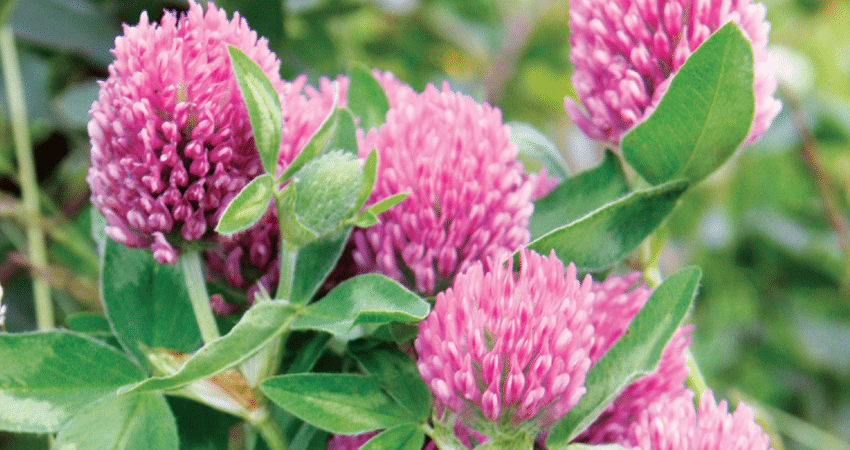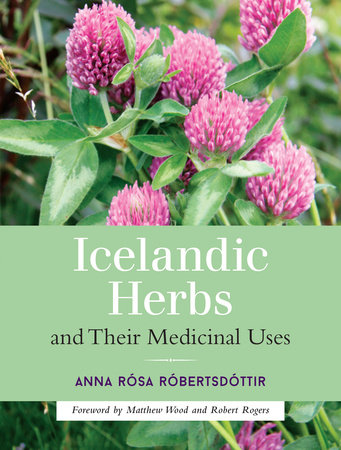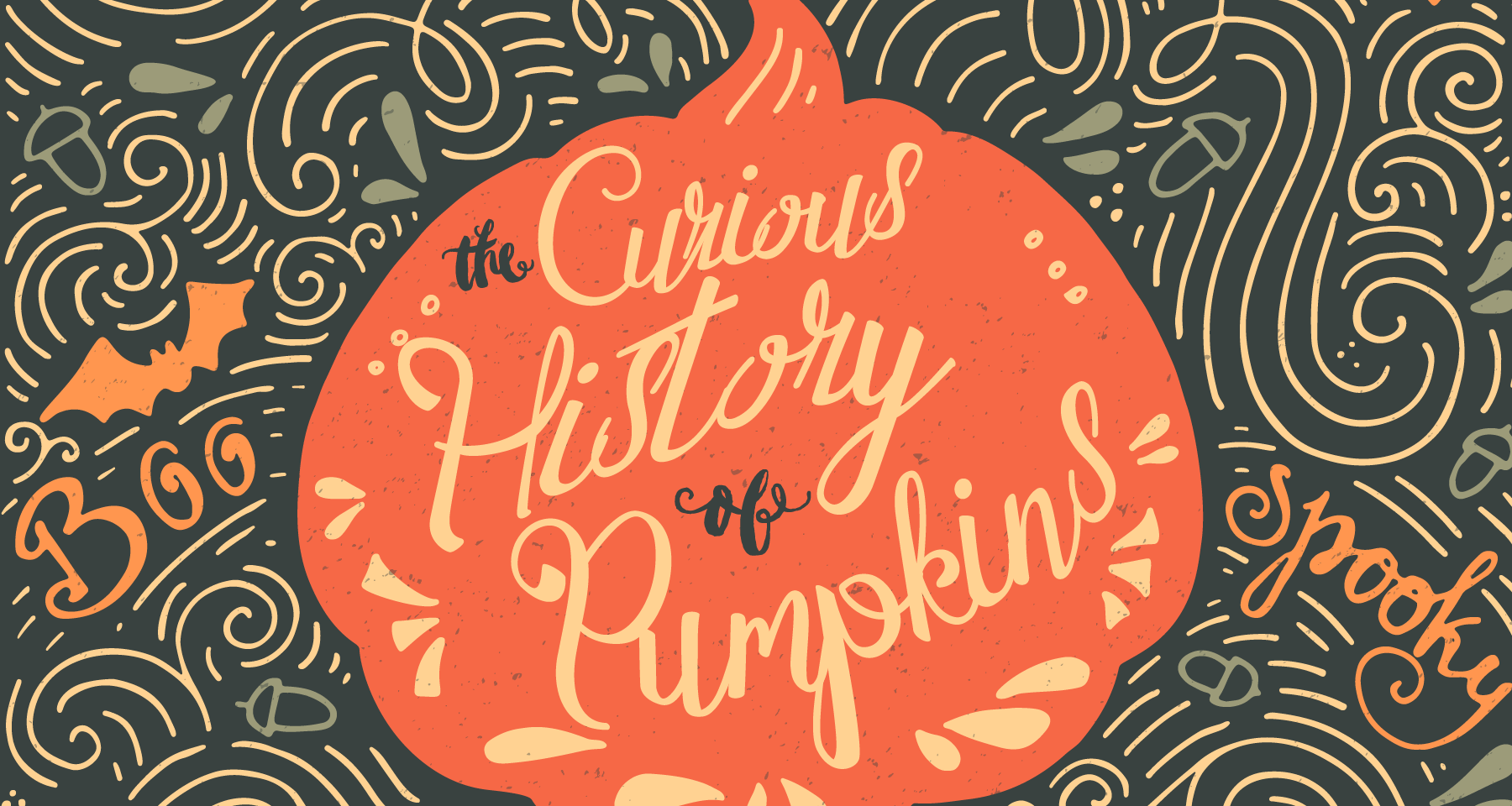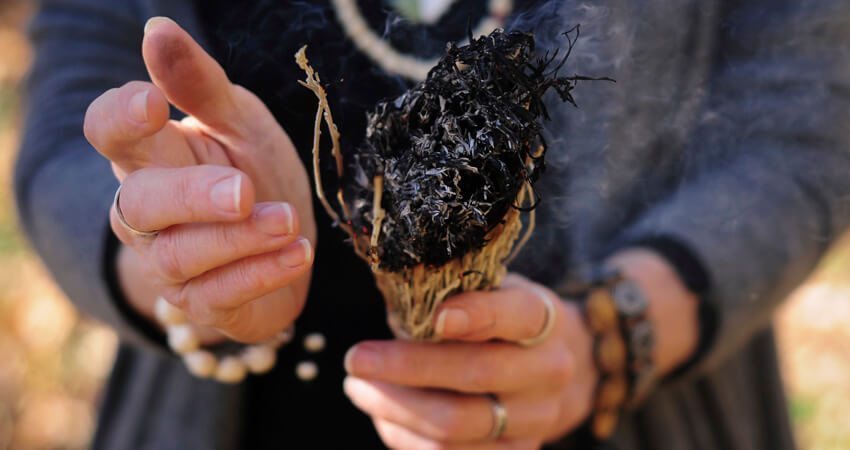
New Release: Icelandic Herbs and Their Medicinal Uses
Categories: Health & Healing New Release
Only 15 years ago, herbal medicine—the oldest form of medicine—was illegal in Iceland. Much has changed since then as over 80% of the world now relies on herbal medicine products as part of its primary healthcare. Today, the user-friendly, illustrated handbook Icelandic Herbs and Their Medicinal Uses by Anna Rósa Róbertsdóttir hits the shelves. Of the 85 profiled herbs, each one is also found outside of Iceland, including in North America. The guidebook is an asset for amateur and professional herbalists alike.
Icelandic Herbs will educate you on how to harvest, dry, store, and make herbs into medicine, while steering you clear of protected and potentially poisonous plants. In addition to treating existing ailments, herbs can also function as preventative medicines, allowing readers to take a more active role in their health, even incorporating herbs into their daily diets. Eighteenth and nineteenth century texts provide the sources of many of the rich histories found in Icelandic Herbs, and the National Center for Biotechnology Information provides much of the recent research.
Author and lecturer Anna Rósa Róbertsdóttir hails from Reykjavik, Iceland; studied medical herbalism at the College of Phytotherapy in the UK; and is a member of the National Institute of Medical Herbalists. Her products can be found in more than fifty retail stores in Iceland, and her handbook will explain how and why to make infusions, decoctions, tinctures, powders, syrups, oils, ointments, and more. You’ll find herbs for chronic conditions like arthritis, back pain, and cancer to more temporary ailments like toothaches, wrinkles, and almost everything in between. Here is an exclusive look at the opening of Icelandic Herbs:

Tags: Herbalism Anna Rósa RóbertsdóttirIceland is a small country with a population of about 330,000 people and a relatively short history of herbal medicine. The flora of Iceland consist of about five hundred plants, of which 85 are medicinal herbs that are discussed in my book. Most of the medicinal plants are not unique to Iceland; they also grow in Europe, North America, and elsewhere in the world. However, few of the herbs are not commonly used elsewhere. There are numerous references to medicinal uses of plants in the old sagas of Iceland, but the old texts that are the most accessible nowadays were published in 1783 and 1830. In these works, the authors often refer to books from Europe, commonly Germany and Norway.
When discussing herbal medicine with the older generation of Iceland today there is a collective memory for one herb in particular that people remember their grandmother using, namely Yarrow, and mainly in ointments. Other herbs that often get mentioned are those that are also used as food, e.g., Iceland Moss, Dulse, Bilberry, and Crowberry. For decades, the only herbalists working in Iceland all belonged to one family, which used the same recipes for well over 100 years. These recipes consisted of various herbs made into a few types of decoctions that were prescribed for all ailments. Some descendants of this family are still practicing in this way today and the ingredients in the decoction are a well-kept family secret. It was not until 1990, with the arrival of an Icelandic herbalist educated in the U.K., that herbalism started to be recognized again in Iceland. Today there are four herbalists working in Iceland, all educated in the U.K. and none of them with any family history of herbalism. Herbalism was illegal by law until 15 years ago in Iceland. However, herbalists were left to their own devices without any action being taken, before it became legal to practice. Many medicinal herbs that are legal to use both in Europe and the U.S. are illegal in Iceland and use is controlled by the Icelandic Medicines Agency. As a consequence of the above restrictions, I have often had to be quite creative in the use of the few herbs that are easy to collect in Iceland. I have commonly used a number of species that are closely related to well-known medicinal herbs elsewhere that I have found to work in a similar way. Here is an example of a few of them: Creeping Thyme, Sea Mayweed, Downy Birch, Lady’s Bedstraw, Northern Dock, and Woolly Willow.
Of the medicinal plants in Iceland only about 15–20 are common enough to wildcraft in any quantities without over-harvesting. It is easy to wildcraft common herbs in Iceland as there is a lot of wilderness within easy access and very little pollution. However it is not common to find forests in Iceland; it is a country composed of heaths, mountains, and marshland with the types of herbs that grow in these conditions. The season to harvest in Iceland is very short, spring comes late and autumn early. Since the growing period is so short in Iceland there has been some speculation that the medicinal herbs are more potent here than elsewhere.
My book is written primarily with the general public in mind because knowledge of medicinal herbs belongs to everyone and not to the chosen few. In my work as a medical herbalist for the past two decades, I have held many courses and have clearly found that there is a growing interest in Icelandic medicinal herbs. I have always felt it important to inform people about Icelandic herbs because it is easy to collect common medicinal herbs in Iceland, which are more often than not categorized as weeds. Medicinal herbs can be used as daily preventives and refreshments, and because individuals should take responsibility for their own health, medicinal herbs can become part of one’s daily food intake.
Herbal medicine is the oldest form of medicine and is above all built on experience passed on from person to person, although in recent decades scientists have started to research medicinal herbs more thoroughly. I have chosen to take quotes from ancient Icelandic works to give the reader an insight into how medicinal herbs were used in Iceland centuries ago. More often than not, there are similarities between how herbs were used 200 years ago and how they are used nowadays, though this statement does not hold true for every herb.
First, I present information on the harvesting, drying, and storage of medicinal herbs, together with instructions on how to make use of herbs. I sought a way of explaining in simple terms the use of medicinal herbs at home.
Erling Ólafsson, an entomologist at the Icelandic Institute of Natural History, took most of the photographs in the book. Through much dedication and passion he strove to take exceptionally clear and distinctive photographs so that the public would easily be able to identify and distinguish the herbs. The importance of good photographs for a book such as this is indisputable, so I was very fortunate to find Erling for the project and I can never thank him enough for his wonderful contribution.
My book contains a summary of the research that has been done on medicinal herbs found in Iceland, but the summary is by no means exhaustive. Most of the research was not done in Iceland, since most species of medicinal herbs similar to those in Iceland are found in other countries as well. I have not evaluated the quality or results of the research—that would provide material for many more books.
The purpose of summarizing the research that has been done on Icelandic medicinal herbs is to give the reader a chance to find out more about the research that awakens their special interest. Each herb has a detailed bibliography, but most research was found in open databases on the internet and is easy to access. Of special interest is the NCBI (National Center for Biotechnology Information) database, which keeps information on thousands of research papers on medicinal herbs. The website is here.
Much of the research was done on isolated constituents of the medicinal herbs in question and not on individual plant parts. If the research was done on a blend of some herbs, this is stated.
It is my deepest hope that Icelandic Herbs will awaken interest in the treasures that Icelandic nature holds, while also increasing the knowledge and use of medicinal herbs by individuals so they can improve their general health.




